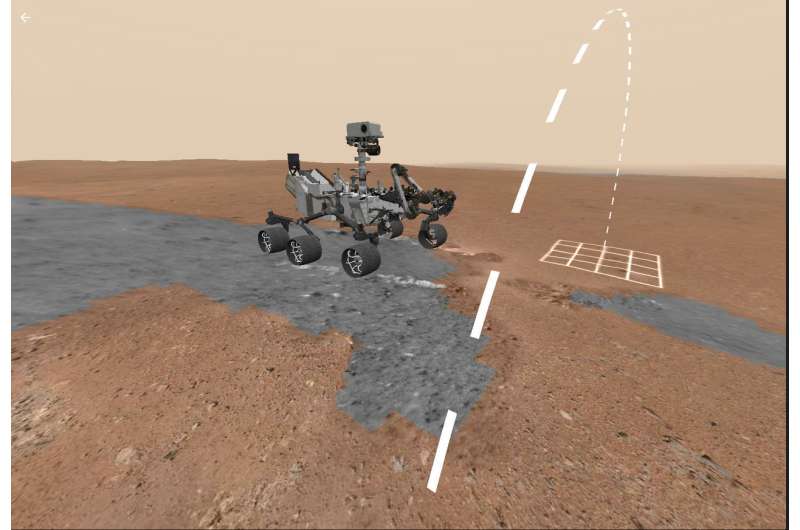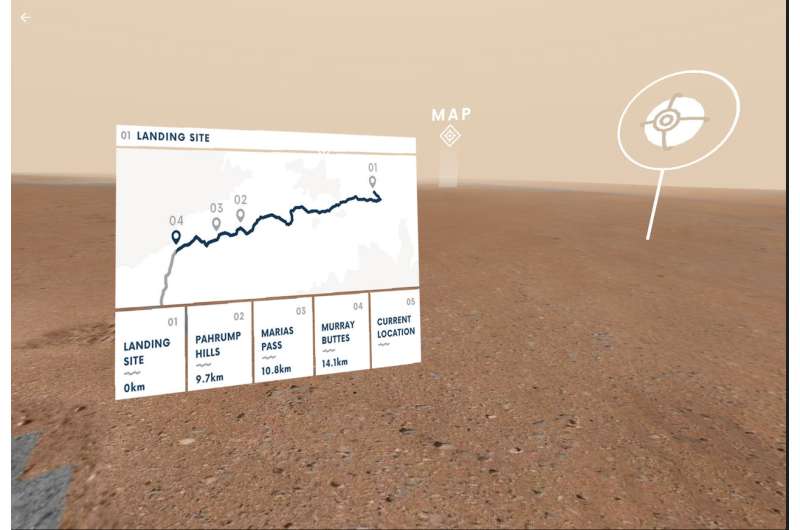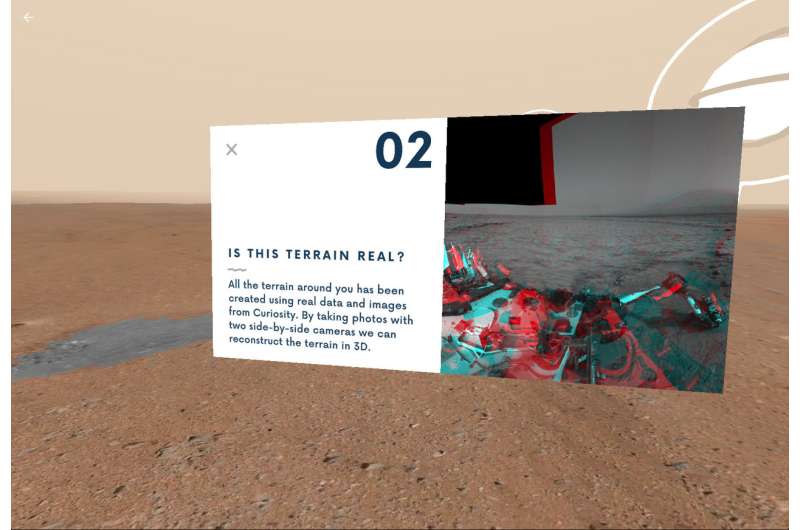Take a walk on Mars—in your own living room

When NASA scientists want to follow the path of the Curiosity rover on Mars, they can don a mixed-reality headset and virtually explore the Martian landscape.
Starting today, everyone can get a taste of what that feels like. NASA's Jet Propulsion Laboratory in Pasadena, California, collaborated with Google to produce Access Mars, a free immersive experience. It's available for use on all desktop and mobile devices and virtual reality/augmented reality (VR/AR) headsets. That includes mobile-based virtual reality devices on Apple and Android.
The experience was adapted from JPL's OnSight software, which assists scientists in planning rover drives and even holding meetings on Mars. Imagery from NASA's Curiosity rover provided the terrain, allowing users to wander the actual dunes and valleys explored by the spacecraft. Since being rolled out to JPL's scientists in 2015, OnSight has made studying Martian geology as intuitive as turning your head and walking around.
Access Mars lets anyone with an internet connection take a guided tour of what those scientists experience. A simple walkthrough explains what the Curiosity rover does and details its dramatic landing in 2012. Users also can visit four sites that have been critical to NASA's Mars Science Laboratory mission: Curiosity's landing site; Murray Buttes; Marias Pass and Pahrump Hills. Additionally, the rover's latest location on lower Mt. Sharp will be periodically updated to reflect the mission's ongoing progress.
At the first three locations, users can zero in on objects of scientific interest, including rock outcrops and mud cracks. Katie Stack Morgan, a JPL scientist on the MSL mission, will explain the evidence of habitability Curiosity has unearthed.
More than anything, Access Mars offers a visceral impression of what it would be like to walk alongside Curiosity, wandering through the lonely, red desert.
"We've been able to leverage VR and AR technologies to take our scientists to Mars every single day," said Victor Luo, lead project manager at JPL's Ops Lab, which led the collaboration. "With Access Mars, everyone in the world can ride along."

Access Mars was created using data collected by JPL and built on WebVR, an open-source standard, in an effort to expand access to immersive experiences. Google's Creative Labs team was looking for novel uses for VR and encouraged developers to experiment using its tools.
NASA has collaborated with a number of outside organizations to create immersive experiences that allow people to "travel" to distant destinations. NASA worked with Google Expeditions, a free immersive app, to provide 360 tours of JPL Mars rover sites, the International Space Station and other NASA locations, and to profile the careers of women at NASA. JPL also teamed with Microsoft to create OnSight for that company's HoloLens mixed-reality headset. Using JPL's OnSight software, Microsoft collaborated on a public experience called "Destination: Mars" at Kennedy Space Center Visitor Complex in 2016.
"Immersive technology has incredible potential as a tool for scientists and engineers," Luo said. "It also lets us inspire and engage the public in new ways."

More information: Experience Access Mars here: g.co/accessmars
Provided by NASA




















